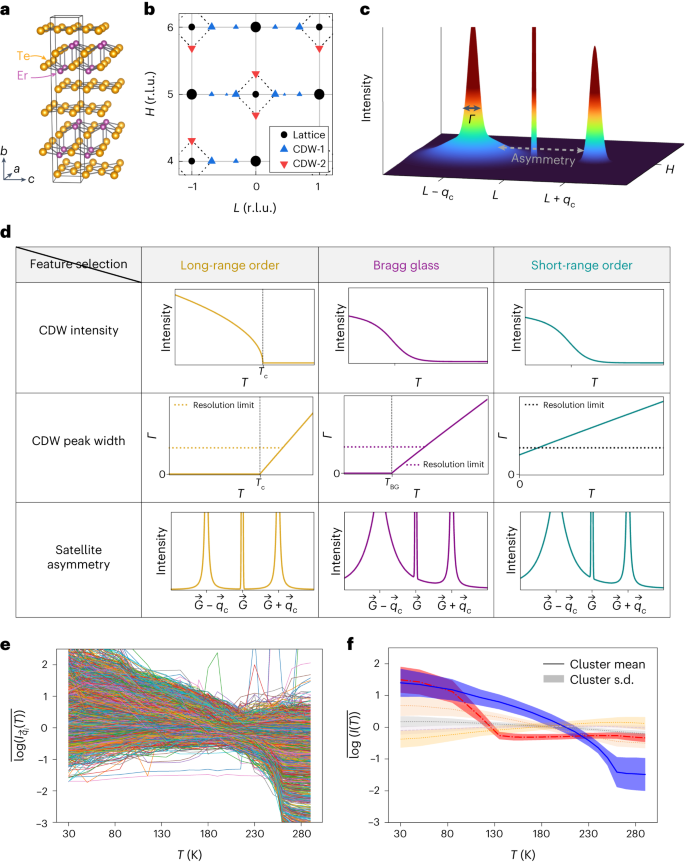2024-04-18 アルゴンヌ国立研究所(ANL)
<関連情報>
- https://www.anl.gov/article/machine-learning-algorithm-reveals-longtheorized-glass-phase-in-crystal
- https://www.nature.com/articles/s41567-023-02380-1
X線回折温度クラスタリングによるPdxErTe3のブラッグガラスシグネチャー Bragg glass signatures in PdxErTe3 with X-ray diffraction temperature clustering
Krishnanand Mallayya,Joshua Straquadine,Matthew J. Krogstad,Maja D. Bachmann,Anisha G. Singh,Raymond Osborn,Stephan Rosenkranz,Ian R. Fisher & Eun-Ah Kim
Nature Physics Published:09 February 2024
DOI:https://doi.org/10.1038/s41567-023-02380-1

Abstract
The Bragg glass phase is a nearly perfect crystal with glassy features predicted to occur in vortex lattices and charge-density-wave systems in the presence of disorder. Detecting it has been challenging, despite its sharp theoretical definition in terms of diverging correlation lengths. Here we present bulk probe evidence supporting a Bragg glass phase in the systematically disordered charge-density-wave material of PdxErTe3. We do this by using comprehensive X-ray data and a machine-learning-based analysis tool called X-ray diffraction temperature clustering (X-TEC). We establish a diverging correlation length in samples with moderate intercalation over a wide temperature range. To enable this analysis, we introduced a high-throughput measure of inverse correlation length that we call peak spread. The detection of Bragg glass order and the resulting phase diagram advance our understanding of the complex interplay between disorder and fluctuations. Moreover, the use of our analysis technique to target fluctuations through a high-throughput measure of peak spread can revolutionize the study of fluctuations in scattering experiments.



